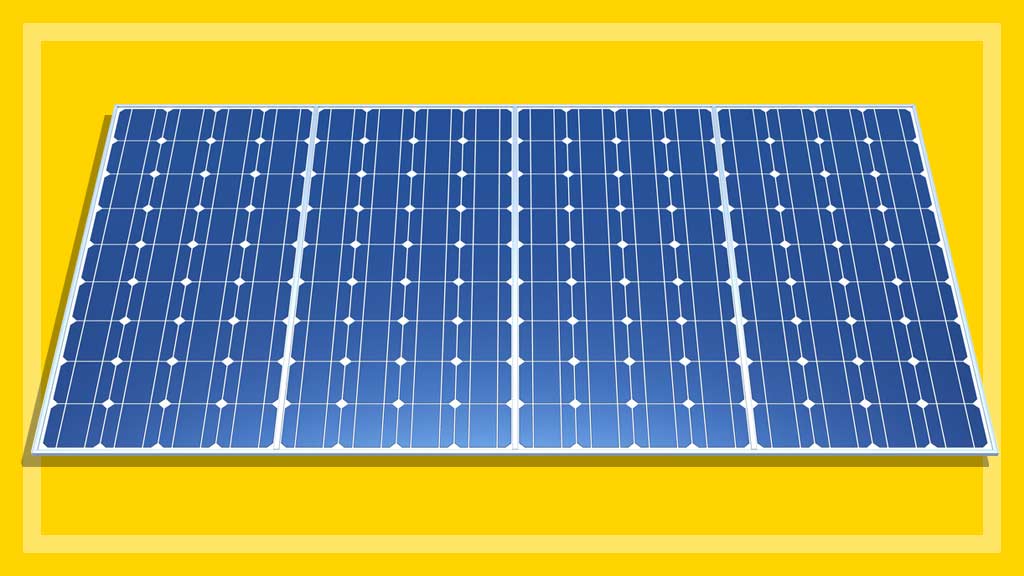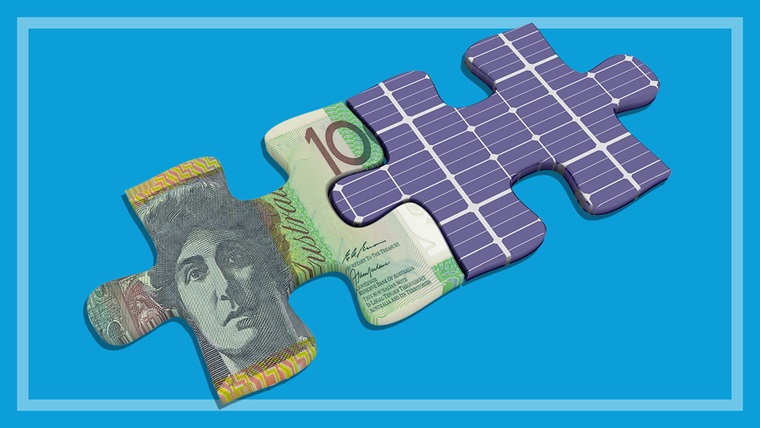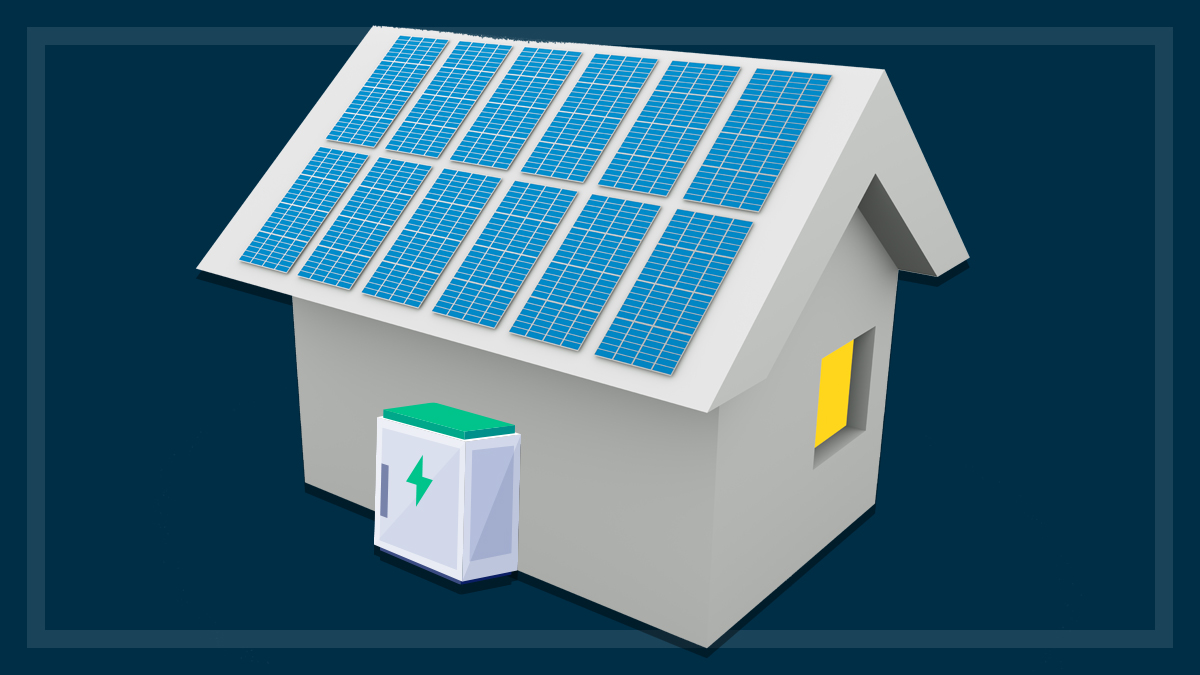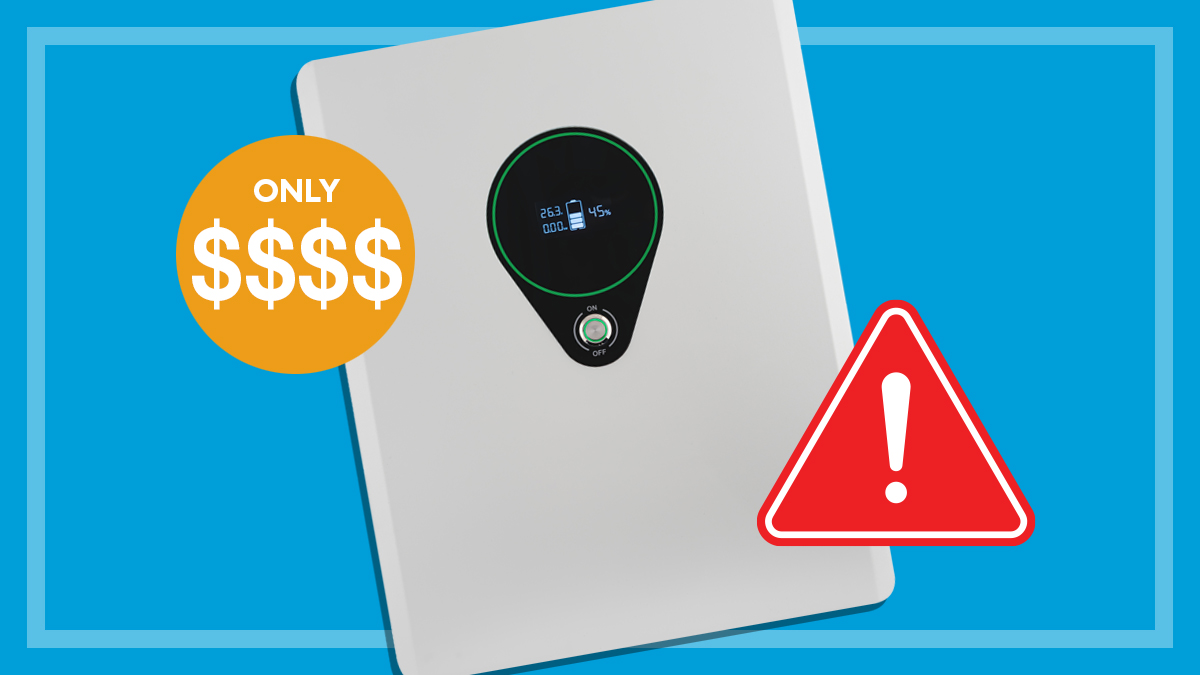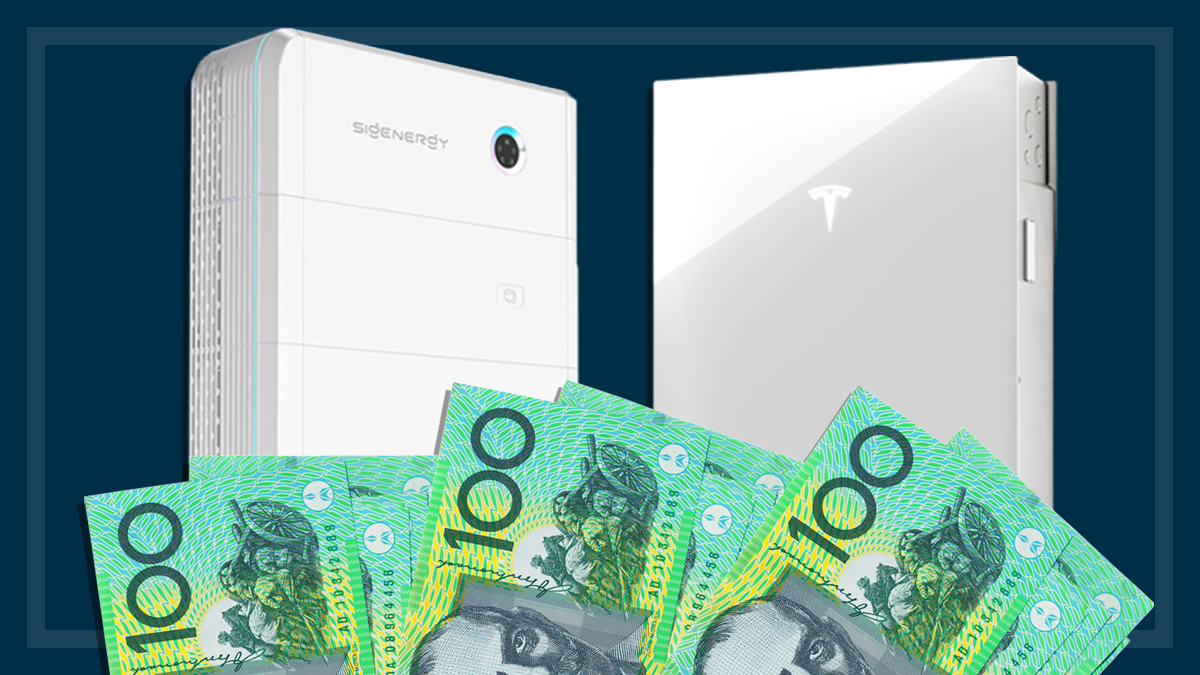Get our independent lab tests, expert reviews and honest advice.
Solar system rebates: How much money can you really save?
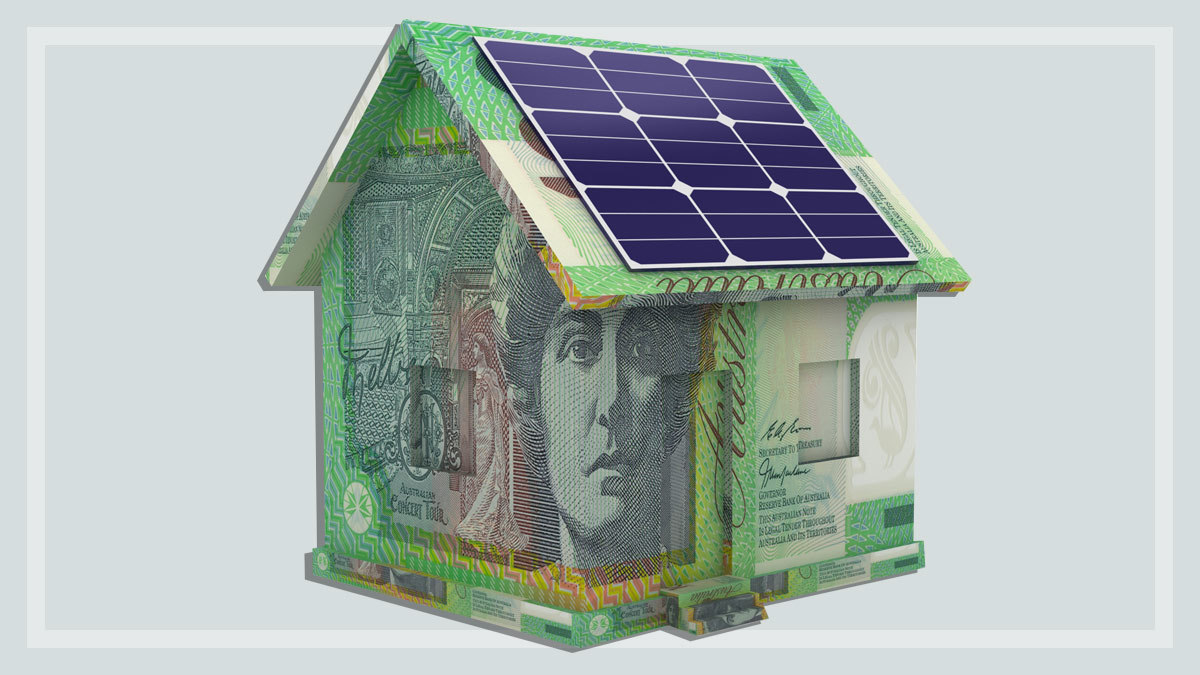
Need to know
- If you install an accredited solar system, you’re eligible for a financial incentive from a national government scheme that can save you thousands
- This incentive is usually included as an upfront discount in the quote from your installer, though it is commonly referred to as a ‘rebate’
- Beware misleading ads and shonky installers – do your research and get multiple quotes before committing
On this page:
- How the solar rebate works
- How much will the rebate save you?
- Will the rebate run out as some ads claim?
- State rebates and financial incentives
Want to save cash while you save the planet? Start looking into solar power and you’ll soon be bombarded with online ads from installers making all sorts of enticing offers. “Zero-cost solar” and “almost free!” are just some of the claims we’ve seen.
Their sales pitch refers to the money you can save with the ‘solar rebate’. It’s not technically a rebate (we’ll get into that later); it’s a subsidy payment under the federal government scheme that helps reduce the upfront costs of installing a solar power system.
It’s not technically a rebate; it’s a subsidy payment that helps reduce the upfront costs of installing solar
Before you grab one of these seemingly red-hot deals, we urge caution. The details of national and state-based rebates can be confusing, and it pays to be wary of pushy salespeople promising unrealistic savings, or claiming the rebate is running out.
Here we explain how the rebate works so you can cut through the spin and be on your way to cheaper power bills and clean, renewable energy.
How the solar rebate works
First things first – what installers commonly call a ‘rebate’ is not actually a rebate. It’s a financial incentive that is payable as part of the federal government’s Small-scale Renewable Energy Scheme (SRES) to encourage people to reduce emissions by installing eligible renewable energy systems (such as solar).
For each megawatt hour of eligible renewable electricity your new solar system generates up until 2030 when the scheme ends, you qualify for what are called Small-scale Technology Certificates (STCs).
These have a dollar value you can ‘earn back’ by selling them yourself or, more commonly, assigning them to your installer to reduce the cost of your system.
Of course, that’s a lot to explain in an ad, so it’s easy to see why installers just say ‘rebate’. Visit the government’s Clean Energy Regulator website for more info on selling STCs.
First things first – what installers commonly call a ‘rebate’ is not actually a rebate
“Pretty much any new solar system installed in Australia by an accredited installer qualifies for STCs and therefore the ‘solar rebate’,” says CHOICE solar expert Chris Barnes.
“Most people opt to take advantage of the rebate in the form of an upfront discount from their installer. Unless you’re an expert in the area, selling STCs yourself can be quite time-consuming and is not really worth the hassle.
“The most important thing when looking into the solar rebate and installing solar in general is to do your research.
“Inform yourself as much as possible before speaking to an installer so you can understand the quotes being given to you, and get at least a couple to compare before committing.”
Why we've partnered with SolarQuotes
We've partnered with SolarQuotes to help you find and buy the right solar, battery, heat pump and EV charger. While we make money if you use SolarQuotes to find an installer, this doesn't influence our ratings. 100% of the money we make goes directly back into our nonprofit mission.
How much will the rebate save you?
The short answer is thousands. But it does vary. The number of STCs your system generates, and therefore how much money you can save on the installation cost, depends on factors such as:
- how big your system is (i.e. how much power it generates)
- where you live in Australia (and therefore the amount of sunshine you can expect)
- the current market price of STCs (which can fluctuate daily as it is driven by supply and demand by the renewable energy certificate market).
When you receive a quote on a new solar system, the installer will usually include a calculation of how many STCs your system will be eligible for and how much money you can get back off the purchase price. They will discount this as an upfront saving for you.
You can use this government STC calculator to work it out yourself.
Each STC is currently worth around $35–40 and a 6.6kW system will currently generate around 60 to 80 STCs, amounting to a rebate of thousands on your installation.
Solar rebate savings example
6.6kW solar system = $9000
This is a typical installation cost in inner Sydney before rebate (source: SolarQuotes)
System generates 72 STCs
STC stands for small-scale technology certificates. Result based on STC calculator.
72 STCs equates to $2520 savings
Based on current approximate rate of $35 per STC (after fees).
Total installation cost: $6480
Note: Quotes and savings will vary between installers, systems and geographical zones. This is an example only.
STC savings will depend on your location
“The number of STCs your system or panel is worth also varies based on where you live,” says Chris.
“Simply put, a solar system installed on a house in a place like Darwin, Brisbane or Cairns will receive more sunlight and therefore generate more power than a system installed in Hobart.
“So people with a system that generates more power will receive more of a reward in the form of a higher-value STC. It is only a few dollars though so doesn’t make a huge difference.”
We’ve found that quotes from different installers can vary significantly. As well as understanding the rebate part of the quote, you should also consider the technology used, the brands of components used and the reputation of the installer.
Will the rebate run out as some ads claim?
We’ve seen persistent examples of ads that use the rebate to greatly exaggerate the savings available. Some also employ ‘panic marketing’ techniques, urging you to get the rebate before it ‘runs out’.
“The fact some installers do this is a bit of a scam,” says Chris. “You don’t have to worry that the rebate is going to unexpectedly ‘run out’.
The STC scheme was always designed to phase out in 2031, with the rebates available decreasing periodically in the lead up to this time. However, it’s by such a small amount that it won’t make a huge amount of difference to your installation costs between one year and the next.”
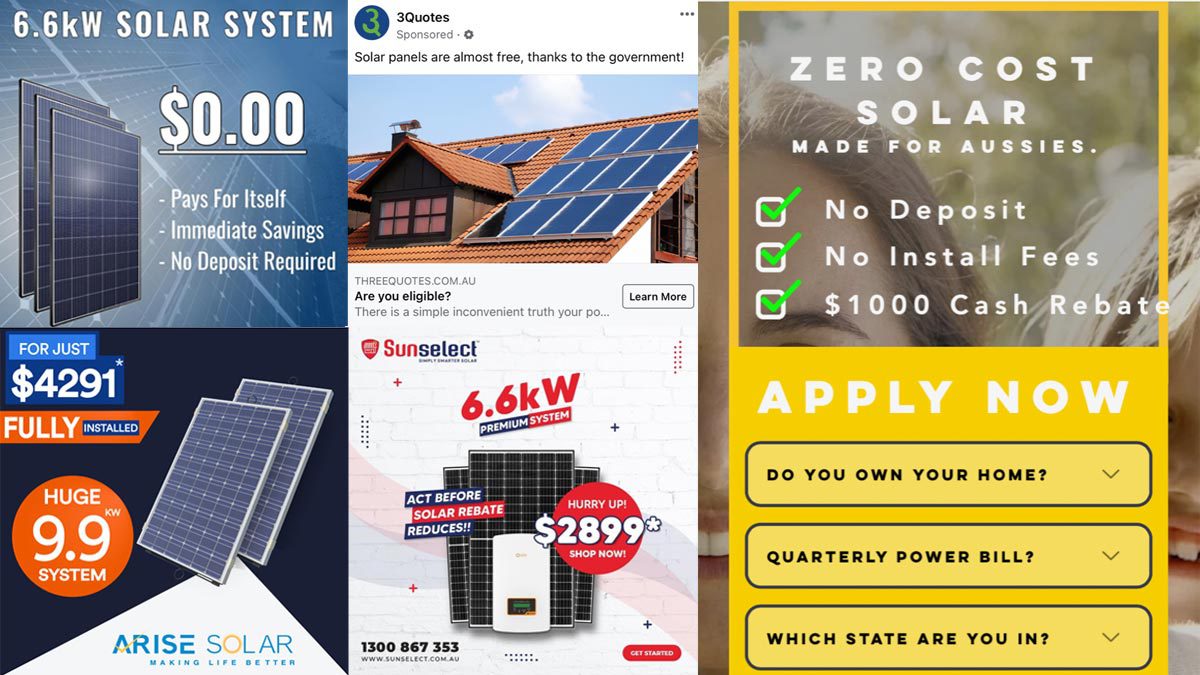
While there are many reputable installers, Chris warns there are also those that employ some questionable techniques to entice customers.
“You should never buy solar from a door-to-door salesperson without at least getting a couple of competing quotes from legitimate installers,” says Chris.
“Be wary of bargain basement prices and obtain your own quotes independently or use a service like SolarQuotes, which CHOICE partners with.”
CHOICE tip: Ensure you choose an installer accredited by the Clean Energy Council (CEC), otherwise you won’t qualify for STCs and therefore won’t receive a rebate.
State rebates and financial incentives
While every eligible solar system installed in Australia qualifies for the STC scheme, you may also be able to get an additional state-based rebate.
In 2023, Victoria, NSW, the ACT, the Northern Territory and South Australia all have schemes available – with certain criteria. Unfortunately there’s currently none available in Western Australia, Tasmania or Queensland.
Victoria solar rebates
Homeowners and renters can receive a rebate of up to $1400 for solar panel (PV) system installation.
There’s also an option for an interest-free loan up to $1400, which needs to be repaid over four years. Eligibility rules apply.
Visit Solar Victoria for more info.
NSW solar rebates
The NSW Government is currently offering low-income homeowners a free 3kW solar system. If you’re currently receiving the Low Income Household Rebate (a payment that helps you pay your energy bills) and have a Pensioner Concession Card or Department of Veterans’ Affairs Gold Card, you may be eligible for a free solar system.
A similar program is available for people living in Land and Housing Corporation (LAHC) properties who receive the Low Income Household Rebate and hold one of the concession cards mentioned above.
Check energy.nsw.gov.au for more information.
ACT solar rebates
The Home Energy Support program provides a subsidy of up to 50% of the total cost of a solar rooftop system (with a maximum of $2500) to ACT pensioners.
ACT residents can also apply for a zero-interest loan from $2000 to $15,000 through the Sustainable Household Scheme. It’s a 10-year loan period.
South Australia solar rebates
In the City of Adelaide, there’s a Sustainability Incentives Scheme that provides rebates for solar power systems for concession card holders and landlords with a property in the City of Adelaide.
There are also rebates available for shared solar systems for tenants of multi-storey buildings, up to $500 per premises.
The City of Adelaide website has more details.
Northern Territory solar rebates
Eligible residents can apply for a grant of up to $5000 for batteries and inverters, and a solar PV system, but only if you’re installing it with a battery.
The NT Government Business and Industry website has more information about eligibility.

